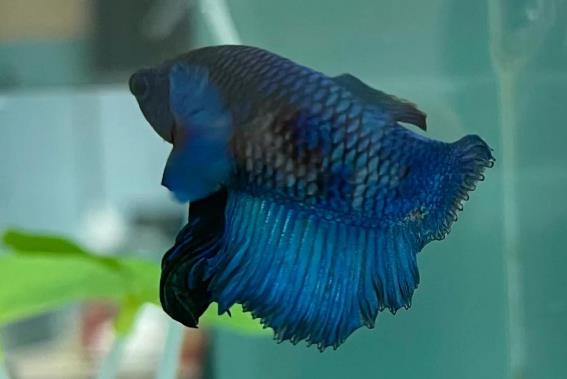Fin rot is a common disease in bettas, and targeted treatment based on its causes and symptoms is essential. Here are comprehensive solutions:

1. Common Causes and Symptoms
Bacterial Infection
Symptoms: The edges of the fins turn white and decay into a broom-like shape, possibly accompanied by blood spots or pinhole-sized lesions.
Causes: Acidic water (low pH), bacterial growth from infrequent water changes, or infection entering through injuries on the fish’s body.
Parasitic Infection
Symptoms: Pinholes or localized decay on fins; the fish rubs against tank walls and appears restless.
Causes: Parasites like Trichodina infest the fish, often introduced via unsterilized live food.
Water Quality Issues
Symptoms: Clamped fins (fins stay tightly closed and can’t expand) or fin burn (tattered, whitened tail fins).
Causes: Fluctuating pH levels, high ammonia/nitrite, or sudden temperature changes.
2. Treatment Methods
1. Bacterial Fin Rot
Adjust Water Quality: Replace 1/3 of the water; add almond leaf extract to lower pH to around 7.
Medication:
Yellow Powder (Furacilin): Add 0.1g per 10 liters of water. Bathe the fish in the dark for 3 days, with no feeding during this period.
Salt Bath: Soak the sick fish in 3% saltwater for 5-10 minutes daily for 3 consecutive days.
Supplementary Measures: Raise the water temperature to 30°C to boost metabolism; feed high-protein live food (e.g., sterilized bloodworms) to aid healing.
2. Parasitic Fin Rot
Trichlorfon Bath: Add 0.2mg per 10 liters of water. After 24 hours, replace the water.
Mercury Nitrate: Short soaks at low concentrations (follow dosage instructions strictly).
3. Emergency Treatment (Severe Infections)
Isolate the Sick Fish: Prevent spread to others. Thoroughly disinfect the original tank (scald with boiling water or soak in potassium permanganate).
Antibiotic Treatment:
Gentamicin: Add 80,000 units per 20 liters of water; bathe for 3 days.
Oxytetracycline: Add 3 tablets per 100 liters of water, used alongside Furazolidone.
3. Preventive Measures
Water Quality Management: Replace 1/3 of the water weekly. Maintain pH between 6.5-7.5 and temperature between 24-28°C.
Food Sterilization: Freeze live food (bloodworms, water fleas) or soak in saltwater before feeding.
Stable Environment: Avoid frequent netting or strong light. Place almond leaves in the tank to inhibit bacteria.
4. Notes
Medication Malachite green is banned due to carcinogenicity—do not use it.
Treatment Duration: Mild cases improve in 3-5 days; severe cases may take 1-2 weeks. Monitor the fish’s response closely during treatment.
With timely treatment and prevention, bettas with fin rot can usually fully recover. If symptoms don’t improve, consult a professional aquatic veterinarian.
